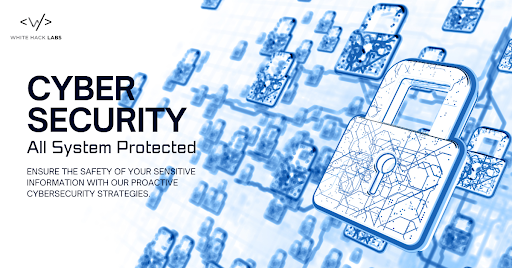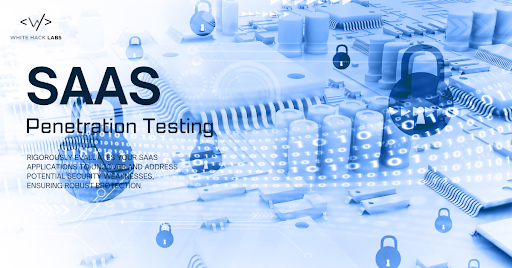
Introduction: A brief Introduction and Purpose of the article
Trend #1: Artificial Intelligence and Machine Learning in Cybersecurity
Trend #2: The Rise of Cloud Security
Trend #3: Zero Trust Security
Trend #4: Cybersecurity Automation
Trend #5: Increased Focus on Cybersecurity Awareness and Training
Conclusion
Artificial Intelligence and Machine Learning in Cybersecurity
AI and machine learning are increasingly being used in cybersecurity to detect and prevent cyber-attacks. AI algorithms can analyze vast amounts of data to identify patterns and anomalies that could indicate potential security breaches. Machine learning algorithms can also be trained to recognize new types of attacks and adapt to changing threat landscapes.
Benefits of using AI and ML in cybersecurity | Challenges using AI and ML in cybersecurity |
Detection of new threats: AI and ML algorithms can detect new and emerging threats that traditional security measures may miss. Automation: AI and ML can automate the detection and response to threats, reducing the need for human intervention and allowing for a faster response time. Enhanced accuracy: AI and ML can analyze vast amounts of data and identify patterns and anomalies with greater accuracy than humans. Scalability: AI and ML can scale to analyze large amounts of data, making it easier to monitor and detect threats across an organization. | Lack of transparency: AI and ML algorithms can be opaque, making it difficult to understand how they work and what data they are analyzing. Adversarial attacks: Attackers can use AI and ML to create targeted attacks that bypass traditional security measures. False positives: AI and ML can sometimes generate false positives, leading to wasted resources and a loss of confidence in the system. Skilled personnel: AI and ML require skilled personnel to design, implement, and maintain the systems, which can be expensive and difficult to find. |
Overall, while AI and ML have the potential to enhance cybersecurity, it's important to weigh the benefits against the challenges and implement them in a responsible and transparent manner.
In Trend #2, we will explore the increasing trend of organizations migrating their data and applications to the cloud, and highlight the necessity of robust cloud security measures to safeguard sensitive data.
The Rise of Cloud Security
The trend of organizations moving their data and applications to the cloud is driven by the benefits of scalability, flexibility, and cost-effectiveness that cloud computing offers. However, this also introduces new security challenges, such as the risk of data breaches, data loss, and unauthorized access.
Cloud security measures are necessary to protect sensitive data and ensure the confidentiality, integrity, and availability of cloud-based resources. This includes strong access controls, data encryption, vulnerability management, and continuous monitoring of cloud environments for potential threats. Without proper security measures in place, organizations are at risk of losing valuable data and suffering reputational damage. Therefore, it is crucial for organizations to prioritize cloud security and work with qualified security professionals to ensure the security of their cloud infrastructure.
Zero Trust Security (ZTS)
A security model that assumes that any user or device, whether inside or outside the network, is a potential threat. Under this model, every user, device, and application must be verified and authenticated before being granted access to the network or its resources.
Difference from Traditional Security Models
Traditional security models rely on the perimeter-based approach, which assumes that threats can be prevented by securing the network perimeter. This approach is no longer sufficient due to the growing number of remote workers, cloud-based services, and other factors that have expanded the attack surface.
Benefits of Implementing ZTS: | Challenges of Implementing ZTS: |
Better protection against cyber threats: Zero Trust Security ensures that only authorized users, devices, and applications can access the network, minimizing the risk of data breaches and other cyber threats. Increased visibility and control: With Zero Trust Security, security teams have greater visibility into network activity and can better control access to resources. Greater flexibility: Zero Trust Security allows organizations to support remote workers, cloud-based services, and other modern work practices without compromising security. | Complex implementation: Zero Trust Security requires significant planning, architecture, and implementation effort, which can be complex and time-consuming. Increased management overhead: Zero Trust Security requires continuous monitoring and management, which can increase the workload for IT and security teams. User resistance: Zero Trust Security may require users to change their behaviors and adopt new security practices, which can be challenging for some employees. |
Cybersecurity Automation
The increasing use of automation in cybersecurity involves leveraging artificial intelligence, machine learning, and other advanced technologies to speed up threat detection and response.
Here are some of the benefits and potential risks of cybersecurity automation:
Benefits:
Improved threat detection and response times, as automation can quickly analyze vast amounts of data and identify potential threats faster than humans can.
Increased efficiency and productivity, as automated systems can perform repetitive tasks and handle routine security issues, freeing up security personnel to focus on more complex threats and strategic planning.
Reduced risk of human error, as automation can eliminate mistakes that can occur due to fatigue, distraction, or other factors.
Consistent and standardized security practices, as automation can ensure that security policies are consistently applied across an organization.
Potential risks:
Over Reliance on automation, which can lead to complacency and a false sense of security. Organizations may neglect to invest in human expertise and fail to keep up with evolving threats.
False positives and false negatives, as automated systems may incorrectly identify legitimate activity as a threat or miss actual threats due to limitations in the technology or data.
Lack of transparency and accountability, as the decision-making processes of automated systems can be opaque, making it difficult to understand and audit the actions they take.
Potential for automation to be weaponized by attackers, who may use automated tools to launch attacks at scale and with greater speed and efficiency.
Increased Focus on Cybersecurity Awareness and Training
Cybersecurity awareness and training are essential in reducing the risk of cyber attacks. Employees who are aware of the potential risks and understand how to detect and prevent attacks can help to safeguard an organization's digital assets.
Ongoing training is necessary to keep up with evolving threats, as attackers constantly develop new techniques and exploit vulnerabilities. Regular training can help employees recognize new attack methods and respond appropriately.
Furthermore, employees need to understand the importance of following best practices, such as using strong passwords, avoiding phishing emails, and keeping software up to date. This understanding can help to create a culture of security within an organization, where everyone takes responsibility for safeguarding the company's digital assets.
In summary, cybersecurity awareness and training are critical in reducing the risk of cyber attacks. Ongoing education is necessary to keep employees up to date with evolving threats and best practices, creating a culture of security that can help to protect an organization's digital assets.
Conclusion
In conclusion, the top five cybersecurity trends for 2023 include Artificial Intelligence and Machine Learning in cybersecurity, the rise of Cloud security, Zero Trust security, Cybersecurity Automation, and Increased focus on Cybersecurity Awareness and Training. These trends are critical in protecting information security and organizations need to stay up-to-date with the latest cybersecurity trends and implement effective security measures to safeguard against cyber attacks. With the constantly evolving cyber threats, it is imperative to adopt a proactive and dynamic approach to cybersecurity to ensure the safety and integrity of confidential data. Hence, organizations must prioritize cybersecurity and invest in the latest technologies and training programs to mitigate potential risks and maintain a secure digital environment.





